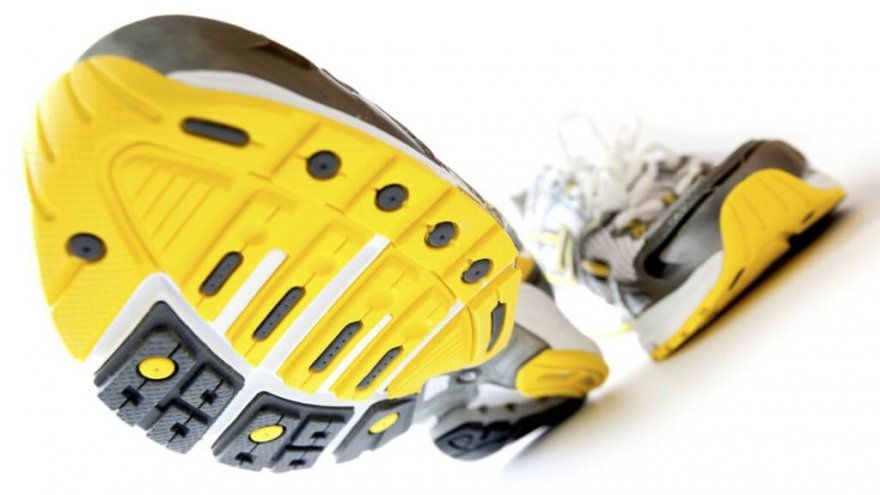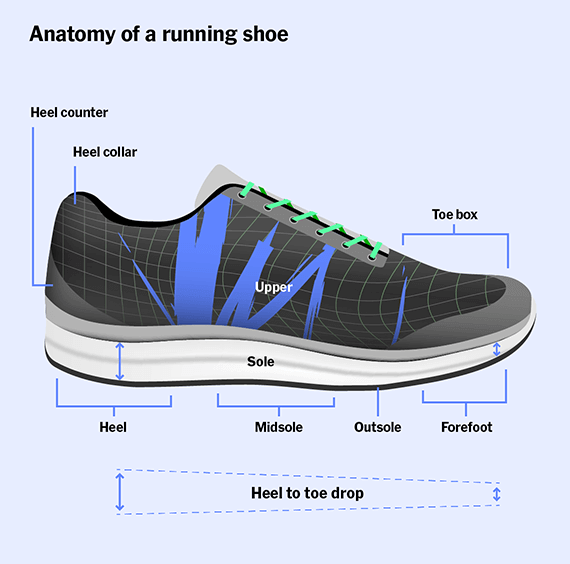What is the Outsole of a Shoe?

Have you ever examined your running shoes? Many parts determine how your shoe will function for you. The outsole is just one of those many parts that make up the shoe.
What is the Bottom of Your Shoe Called?
The bottom part of your shoe is called the outsole. The outsole is the part of the shoe that comes into contact with the ground with every strike of your foot.
Since this part of the shoe is on the bottom, it provides many functions. Those functions include providing traction and stability for the person wearing the shoe.
What is the Outsole of a Shoe?
Your shoe’s outsole is the rubbery grip and cushion on the very bottom. In addition to providing traction, the materials that comprise the outsole determine what kind of cushion or ride you will get from your shoe.
Other things are determined based on how the outsole is built, rigidity and flexibility. Some runners prefer more movement, while others want or need motion control.
What Are the Bottom Parts of the Shoe?
The bottom of the shoe is known as the sole. Designed to give your shoe durability, the sole can be fashioned from many different materials. Rubber is one of the most common materials used to make the bottom of the shoe.

The insole is the first layer of the sole and is the innermost layer that contacts the foot. An optional layer between the insole and the outsole, the midsole allows for extra cushion and shock absorption.
As the outermost layer that contacts the ground, the outsole is made to take a beating. You want your outsole to be waterproof, provide enough friction to give good traction for the activities you plan to do, and last a decent amount of time.
Difference Between Sole and Outsole
The sole is the entire portion of your shoe that is beneath your foot. Generically used, it is just the “bottom.”
However, the outsole is the very last layer of the shoe. This is the part that contacts the ground and protects the bottom of your foot.
What are the Different Types of Soles/Outsoles for Shoes?
Soles can be made of many different materials.
- Rubber – Rubber is a material that is a tried and true substance that has withstood the test of time.
- Polyurethane – Durable, comfortable, and affordable, polyurethane outsoles are also common.
- Ethylene Vinyl Acetate (EVA) – Considered the best shock-absorbing materials on the planet, many running shoes are fashioned from these materials.
- Thermoplastic Rubber (TRP) – Patented in the 70s, this is often recycled rubber. These soles are great for wet weather or outdoor adventure but not always comfortable for the long haul.
Shoes With Good Grip
Trail runners are the first place to start if you are looking for shoes that will afford your excellent grip and traction. If you have ever experienced powering up a mud-covered hill in driving rain, you recognize the importance of a good outsole.
For an everyday trainer, the Brooks Ghost scores high for excellent traction. If you are more of a Nike runner, the Pegasus also gets great reviews. This shoe comes in both a road and trail model. A final option is the Asics DS training shoe.
When considering a great pair of running shoes, consider what your needs are. If you need good traction, flip over the shoe and check out the tread.
That tells a good story of traction.
Don’t miss our guide on how running shoes should fit. Click here to dive in.
Latest Articles
 Is Running on a Treadmill Easier Than Running Outside?Runners have their own preferences, whether it is treadmill running, running outside on the road, or exploring trails. So...
Is Running on a Treadmill Easier Than Running Outside?Runners have their own preferences, whether it is treadmill running, running outside on the road, or exploring trails. So... Is It OK to Use Trail Running Shoes on the Road?While trail running shoes can be used on roads, especially in situations where a runner encounters mixed terrains or pref...
Is It OK to Use Trail Running Shoes on the Road?While trail running shoes can be used on roads, especially in situations where a runner encounters mixed terrains or pref... How to Fix Sore Quads After Running?Rest, ice, gentle stretching, and over-the-counter pain relievers can help soothe sore quads after running. Also, ensure ...
How to Fix Sore Quads After Running?Rest, ice, gentle stretching, and over-the-counter pain relievers can help soothe sore quads after running. Also, ensure ... 10 Fruits With The Most Electrolytes to Replace Sports DrinksThese fruits are high in electrolytes such as potassium, magnesium, and calcium, essential for hydration, muscle function...
10 Fruits With The Most Electrolytes to Replace Sports DrinksThese fruits are high in electrolytes such as potassium, magnesium, and calcium, essential for hydration, muscle function...

